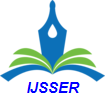Title:
QUALITY OF LIBRARY RESOURCES AT ZIMBABWE
OPEN UNIVERSITY: A CASE STUDY OF MASHONALAND
EAST REGIONAL CENTRE.
|
Authors:
Nyenya Trust, Kandira Nobbie
|
Volume - 2 Issue - 2, Pages - 2539-2552
|
Abstract:
This descriptive research was conducted to describe the quality of library resources at the
Zimbabwe Open University. The method provided the opportunity to gather both quantitative
and qualitative data so as to describe (Glass and Hopkins 1984) the quality of library resources in
the most effective manner. The questionnaire to elicit data from a sample of 40 out of 100. The
sample consisted of 6 RPCs, 1 library assistant and 33 students. The targeted population was
stratified into three main sub-groups; registered students, library assistants and RPCs. Then,
selection of the sample from each sub-group was subjected to simple random sampling. It can be
concluded that the major constraints affecting the use of library resources were: inadequate
reading materials and lack of current library materials, and convenience of the library location to
the users. It can be also concluded that most of the open and distance learning students use
electronic resources than hard copies. On account of the above conclusions, the researcher
recommends the following: There is need to improve on provision of current and adequate
library resources such as journals, textbooks, reference materials, and newspapers, longer
opening hours for readers without closing library on weekends and public holidays to enable
library users to use the library efficiently. The region should ensure that electronic resources are
readily accessible. The region should train new students in accessing electronic resources as they
are the most commonly used resources by students. The University should also ensure that new
students access communication tools that enable them to access electronic resources. |
Cite this Article: [Trust, Nyenya, and Kandira Nobbie. "QUALITY OF LIBRARY RESOURCES AT ZIMBABWE OPEN UNIVERSITY: A CASE STUDY OF MASHONALAND EAST REGIONAL CENTRE." International Journal of Social Science & Economic Research 2.2 (2017): 2539-552. ] |
Download Full Text |
 International Journal of Social Science & Economic Research
International Journal of Social Science & Economic Research

